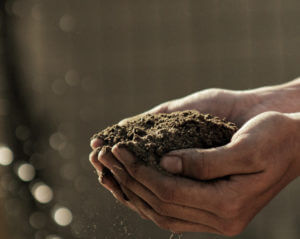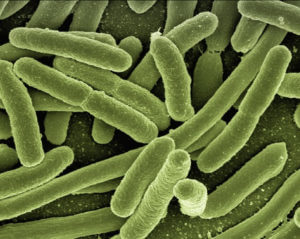
All About Cows: What’s Got Four Legs, Says “Moo” and Could Save the Planet?
Many of us have been taught that overgrazing by methane-emitting cattle is turning green pastures into parched deserts and is responsible for widespread desertification that threatens valuable biodiversity, soil quality, and more. Not true, because Allan Savory explains in his TED talk, “We were once so sure the Earth was flat. We were wrong then, and we are wrong again.” You might think it unlikely that these grazing animals are the soil saviors we need, but it’s true.
With comprehensive management and planned grazing, cows can facilitate rebuild soil and restore it to health – improving carbon sequestration, natural water cycles, soil fertility and nutrient density.
Below is an excerpt from Cows save the planet By Judith D. SchwartzIt has been adapted to the web.
Prefer sound?
Listen to the audiobook fragment below Cows save the planet.
Cows saving the planet?
Why not? What sounds like an absurd idea starts to make sense when we stop to look at our current environmental situation from a soil perspective. To crouch down at ground level—literally or metaphorically—and see how human and animal activity is strengthening or destroying the lean layer of soil that envelops our planet. To appreciate the imperceptible dance of animals, plants and minerals that keeps us alive.
You see, that brown stuff we rush to wash off our hands (or, depending on our age, our laps) is at the heart of most of the biological functions that sustain life. Soil is where food is made and waste is broken down. It absorbs and holds water; or, if it’s depleted of organic matter, it drains it away. It filters out biological toxins and can store enough carbon to significantly and relatively quickly reduce carbon dioxide levels.
Home to more than 95 percent of all life on land, the quality of the soil in any given location largely determines the nutritional value of food, how well an area copes with drought or storms, and whether an ecosystem is teeming with life or the equivalent of a ghost town.
Where are these cows housed?
Cattle, like all grazing animals, can, if managed properly, facilitate build soil. When moved in enormous herds on a planned schedule, the livestock will nibble just enough to encourage plant and root growth, trample the ground in a way that breaks up compacted soil to allow dormant seeds to germinate and water to infiltrate, and leave behind feces and urine to fertilize the soil with organic matter (otherwise known as carbon).
The result is a wide range of grasses and other deep-rooted plants, and wealthy, aerated soil that acts like a giant sponge, minimizing runoff and erosion. (Cows and their eruptive digestive habits have recently become notorious—I will discuss methane in Chapter 1.) The apply of ungulates such as cattle in land reclamation, a practice called Holistic Management, was developed and refined over decades by Allan Savory, a farmer and rancher and former leader of the opposition to the then white government of Rhodesia. In the case of cows or other herbivores operating Holistic Management on enormous areas of degrading land, it can mean that a lot of soil has been created or preserved.
Leaving our cattle herd aside for a moment, another way to build soil is through zai holes, a time-honored farming method from Burkino Faso in West Africa. Diminutive holes are dug in the field that capture water and retain soil organic matter (compost and the like), both valuable resources in parched areas that are dependent on seasonal rainfall —about one third of Earth’s land surface. Cattle have a similar effect. Rancher and consultant Jim Howell told me that it helped Grasslands Ranches, LLC in South Dakota survive the weighty rains of spring 2011, even as nearby properties suffered: The herds left hoof-sized pockets in the ground, so the water pooled instead of creating gullies and eroding the soil.
If you’re wondering why we want to build on soil, isn’t there enough land there already?
Globally, we are losing topsoil ten times (in the United States) to forty times (in China and India) faster than we are producing it—about eighty-three billion tons per year.

Soil is stripped from fields in weighty rain; it flows down our rivers; its surfaces are overgrazed and undergrazed; when left exposed, it loses its organic matter as carbon oxidizes and escapes into the atmosphere. Despite our collective societal indifference to soil, we all have a gigantic stake in its fate. In the oft-quoted and paraphrased phrase, “Man has only a lean layer of soil between himself and hunger.” Until now, we have paid little attention to our soils. And we pay the price.
On a direct, everyday level, the food we eat is only as good as the soil it comes from. Partly because of soil depletion, most food grown today is less nutritious than in most previous eras. Research by the British Department of Health has shown that a steak today has half the iron of its equivalent fifty years ago, thanks to changes in what animals eat. Growing high-yielding crops accelerates the dilution of nutrient content. Over time, this can lead to nutrient deficiencies that the grower may not notice until the effects on the plants are noticeable, at which point the situation becomes extreme.
Remember the saying, “An apple a day keeps the doctor away”? Over the past eighty years, the calcium content of a medium apple has dropped by almost half, while phosphorus, iron, and magnesium levels have fallen by more than 80 percent. So to get the same doctor-saving effect, you’d now need four or five apples. And that’s fresh off the tree; processed foods also lose nutrients on the way from field to box or bottle.
Some scientists believe that today’s high obesity rates are paradoxically a symptom of malnutrition caused by a diet needy in micronutrients. Which raises the question: Could the decreasing nutrient content of our food also be a factor in the rising number of chronic diseases and allergies, particularly food allergies among children?
Fortunately, many of the creatures living beneath our feet are ready to create and improve the soil for us — whenever conditions are right.
This is where the microscopic choreography comes in; the cows (or the digger) are just the catalyst. Earthworms, insects, and microorganisms like fungi and bacteria aerate the soil, break down waste, exchange food (mycorrhizal fungi take glucose from plants and in return facilitate the plants absorb nutrients), and break down rocks into minerals like calcium, magnesium, iron, and zinc, which are imperative to our health. Herbicides, pesticides, and fungicides widely used in industrial agriculture kill many of these organisms; from the perspective of the soil or its inhabitants, chemical additives are not such a great thing.
In the case of zai, the organic matter in the cavities attracts termites. Termites, on the other hand, burrow and create tunnels, allowing water to soak into the ground rather than evaporate. Although they are usually considered pests, termites in marginal areas play essentially the same role as earthworms in greener climates.

IN Dirt: The Erosion of CivilizationGeomorphologist David Montgomery offers numerous cautionary tales of kingdoms, cultures, and empires that squandered their land and found themselves with nothing left to live on. From the earliest farmers in the Fertile Crescent to the Maya, Romans, and Easter Islanders, societies exhausted their land, only to disperse and regroup in greatly diminished forms or be forgotten by history.
Not that people don’t know better.
Advice on how to care for the soil has been passed down since the first primitive hoes broke through the virgin earth. Luc Gnacadja, executive secretary of the United Nations Convention to Combat Desertification, likes to quote this proverb from Vedic Sanskrit scriptures from around 1500 BCE: “On this handful of soil we depend for our survival. Nurture it, and it will grow our food, fuel, and shelter, and surround us with beauty. Abuse it, and the soil will sink and die, taking humanity with it.” More recently, in 1937, Franklin D. Roosevelt made the same statement, but with a nationalist bent: “The nation that destroys its soil destroys itself.”
Despite historical warnings, the temptation to plant on fragile hillsides, clear forests, enhance the yield of cash crops, or otherwise try to squeeze more out of the land proves too great. But today we can’t simply pack up and move to more promising terrain, leaving the damage behind.
It’s time to start treating soil like the most valuable resource it is.
This doesn’t mean giving up on its richness—soil is a renewable resource that can respond quickly to vigilant management. Because soil is integral to so many biological processes, nurturing and improving it provides us with many paths to ecological renewal—with rewards far greater than what you’ll see at your feet.
